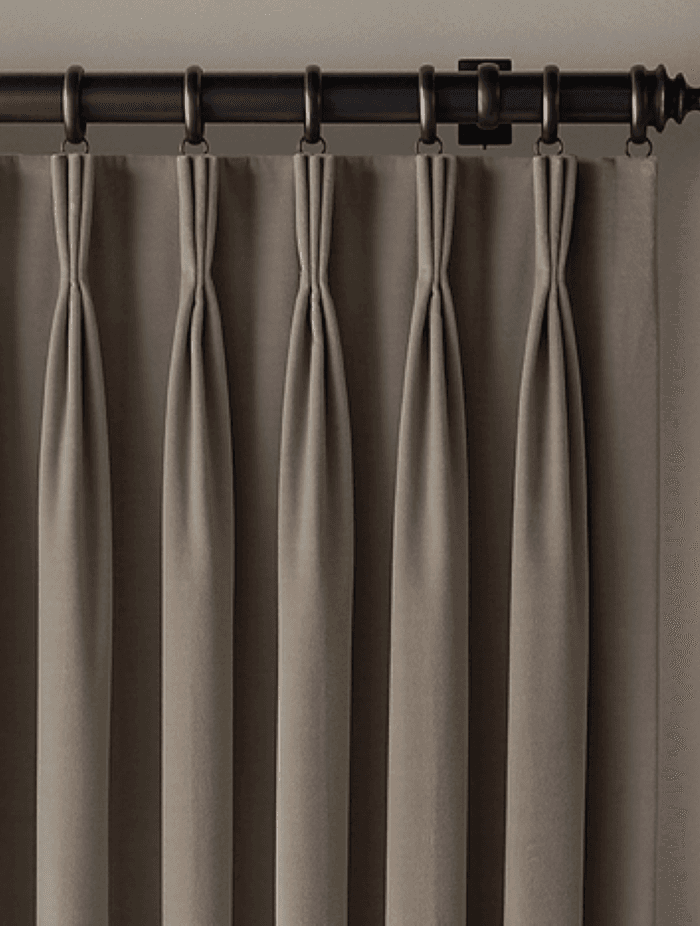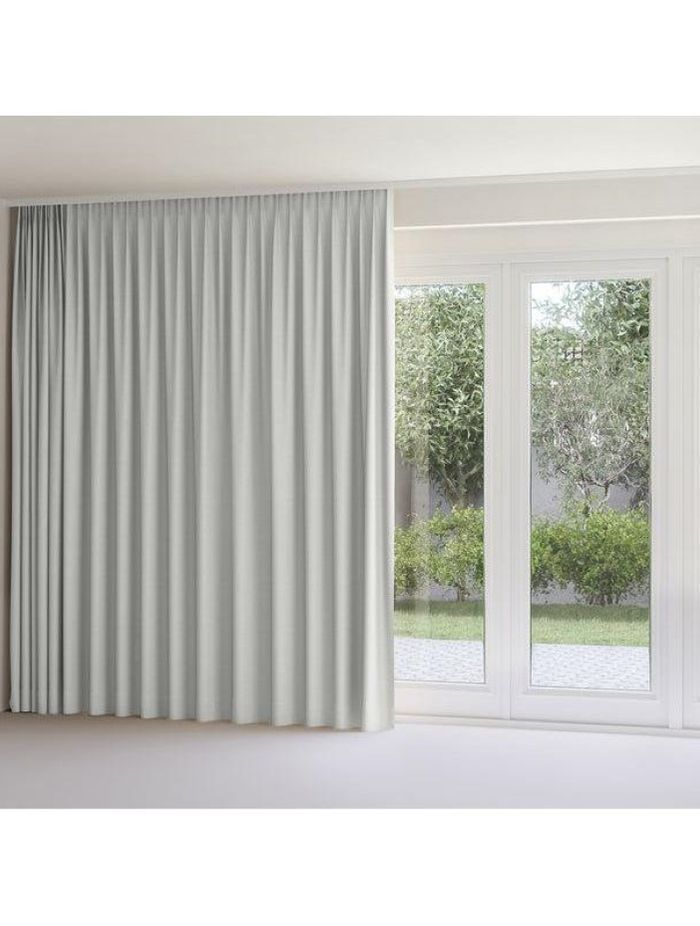17 different types of curtains for Australian homes

1. Eyelet curtains
Eyelet curtains are hung curtains that are threaded through metal loops and hung from a pole. This simple design concept comes in many versatile and modern variations. Being hung from a metal pole also allows curtains to glide with ease. Many homeowners enjoy their even pleats, furthering their clean and modern appearance. They're also easy to fit over a variety of window sizes and can be positioned in many ways while still maintaining a chic look.
But if you want to go beyond a basic eyelet curtain appearance, you can accessorise your curtains. The rings can be custom-designed and embellished and the rod can be manufactured at varying thicknesses. Curtains can also be made of printed and embossed material if you'd like a more Bohemian aesthetic. They are enjoyed by people wanting an option that's both functional and decorative.

2. Pleat curtains
As mentioned before, eyelet curtains are a type of pleat curtains. However, plenty of other types of window treatments are in this category. What they all have in common are even pleats across the curtain's fabric, ensuring that they look well-kept and clean no matter how users position them. Goblet pleat curtains open at the top and are pinched a few inches down. The result is a "goblet" shape at the top of the curtain's fabric and more tight-pinched pleats below.
Though they are still easy to pull back and forth from the centre of the window, they will not bunch together tightly when pulled back due to their design. As their name suggests, box pleat curtains are curtains with box-shaped pleats. The pinches are more inconspicuous, lending a particularly neat look. Box pleats add volume and interesting shape to the curtain's fabric.
Related article: How to choose curtains for your living room
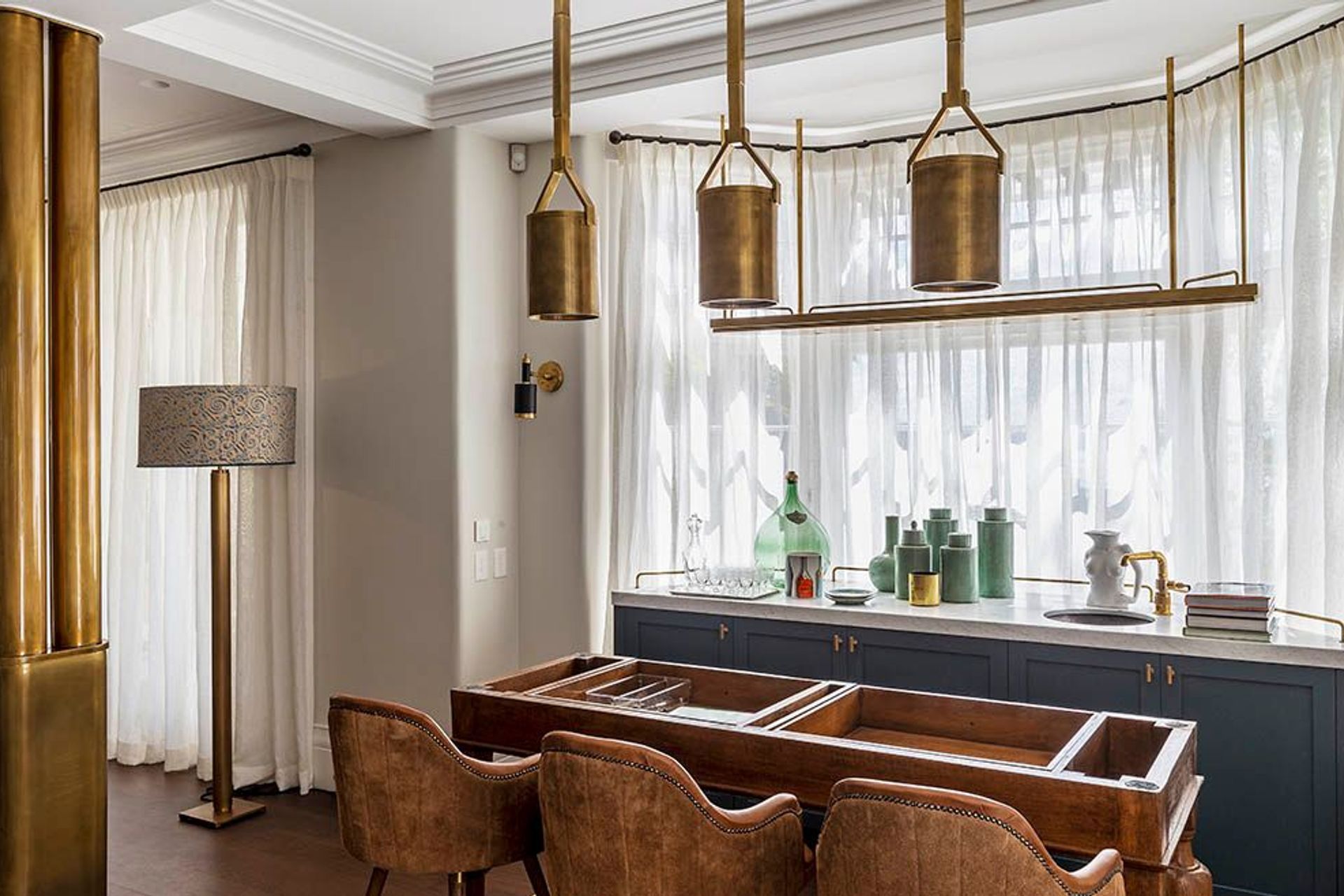
3. Rod pocket curtains
Rod pocket curtains are also draped on a rod. However, the rod's material is only visible at its ends, while the fabric encases the centre part. Many homeowners like rod pocket curtains since they can hang these curtains while concealing the rod. This way, the visual emphasis is almost completely placed on the curtain. They also bunch nicely and evenly, providing a neat, casual look suitable for most homes.
Their main drawback is that they're very difficult to open and close. You can still part the curtains and tie them towards the curtain edges, but they won't pull back completely from the top. For that reason, it's best to opt for this choice if you mainly like them for decorative purposes.
4. Blackout curtains
Blackout curtains are used primarily for functionality. They're made of a tightly woven fabric that's also double-lined. The result is a window treatment that can block out sunlight. Non-blackout curtains offer shade, too, but blackout curtains are especially effective. This is a particularly great option to use for hot summer days. The sun's heat won't get past the curtain's fabric unless they do so through gaps.
Homes will be cooler, maximising residents' comfort and your HVAC system's lifespan. Although blackout curtains are primarily popular for their function and not their looks, they can be stylish too. Most blackout curtains come in beautiful sets with the blackout material facing the window.
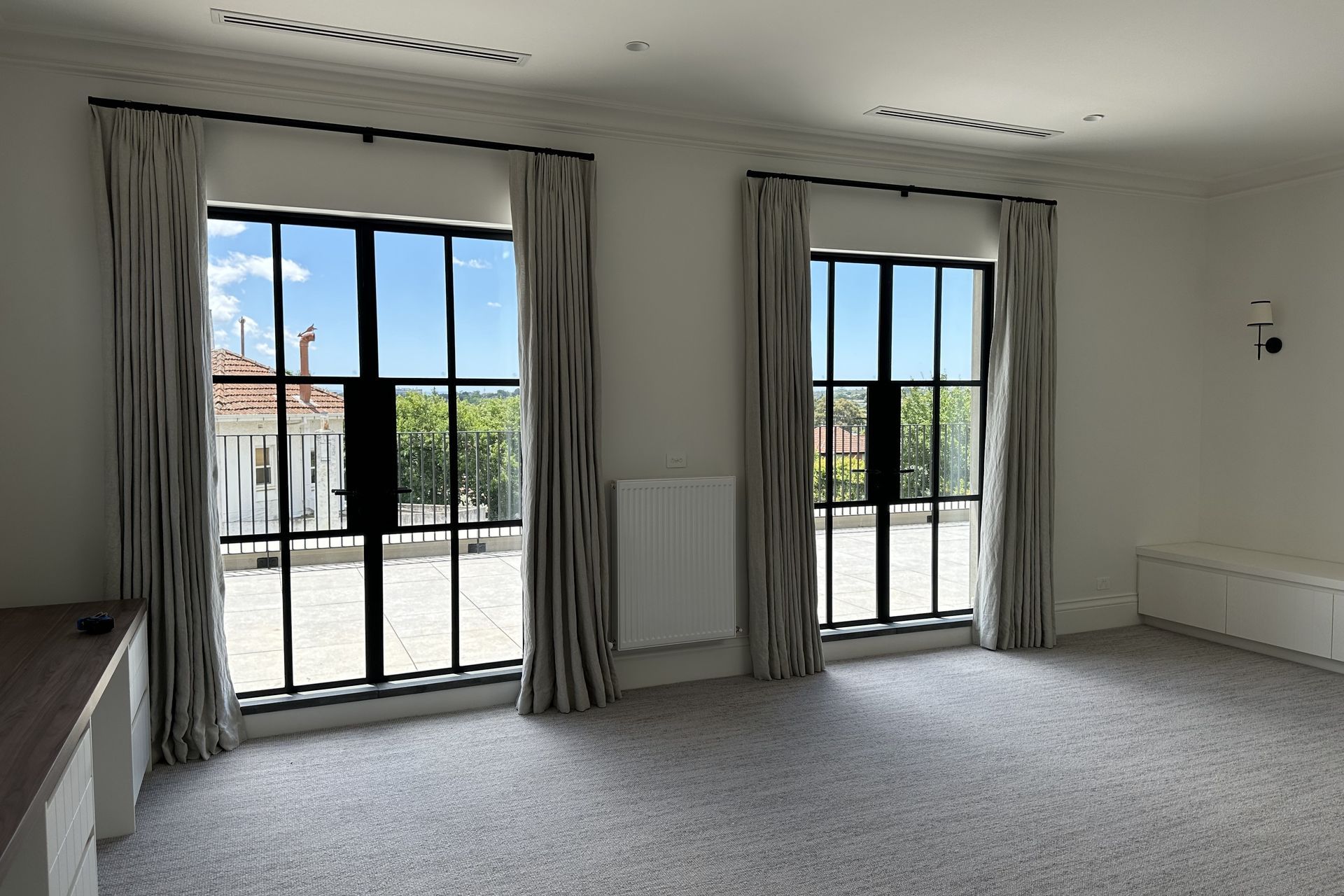
5. Tab top curtains
Tab top curtains are specially defined using exposed and/or fabric loops drawn through the curtain rod. These designs are much more laidback than other curtain styles, making them greatly suited for breezier room designs. They also use less fabric than most other curtain types. Less fabric usage makes them more affordable, which is fantastic for homeowners who prioritise cost. Despite their casual appearance, they're still versatile options for many home designs. Unless you're after an ultra-formal room aesthetic, tab-top curtains are an affordable and beautiful option to tie your whole room together. They're especially suited as indoor patio curtains, covers for glass doors, and more.
Related article: Curtains and drapes - What's the difference?
6. Sheer curtains
If you don't want curtains that completely block out light, consider sheer curtains. As their name indicates, they're manufactured to be sheer and allow some illumination to peek through their fabric, even when drawn to a close. They can be used on their own or in conjunction with opaque curtains. This way, homeowners can choose between blocking out sunlight or allowing a soft glow. Also, sheer curtains come in various colours that deviate from classic white. Homeowners can also consider semi-sheers if they want a material that's not completely sheer or opaque. The glow will be even softer but still present. Either way, these curtains can provide a stunning ambience to a room while utilising natural lighting.
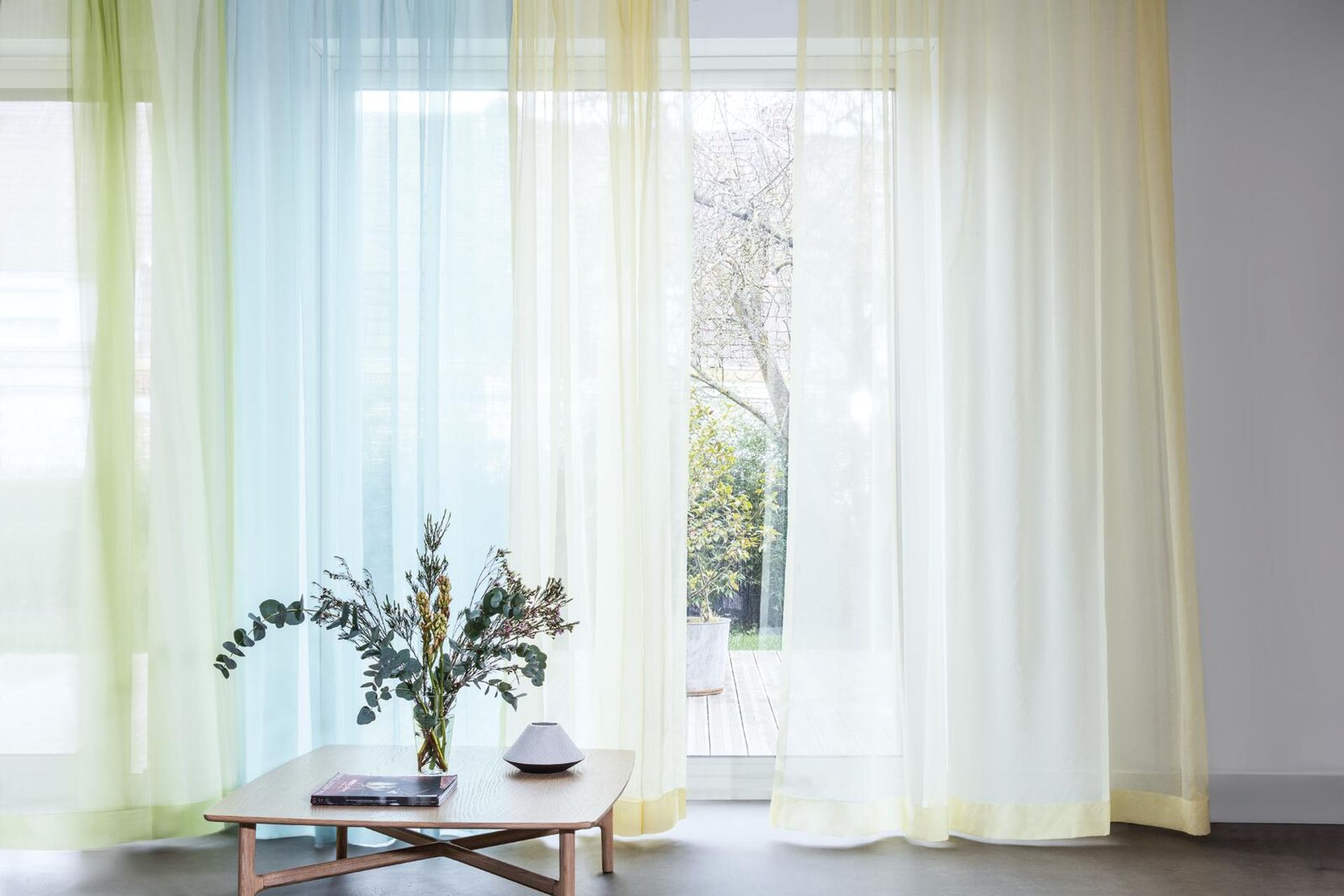
7. Swag curtains
Swag curtains bring a touch of classical elegance to windows. They consist of fabric draped gracefully across the top of a window, often in a semi-circular or curved pattern, with tails that hang down on either side. These curtains are more about decorative flair than function, as they don’t typically cover the entire window. Swags can be used on their own for a minimalist yet stylish look, or paired with other window treatments like curtain panels or blinds for a layered effect.
Given their draped nature, the choice of fabric is crucial to achieving the desired look; heavier materials can offer a more defined shape, while lightweight fabrics might provide a more relaxed drape. However, since they don't cover the window fully, they're usually combined with other curtains for privacy and light control.
Related article: What are honeycomb blinds? An introductory guide
8. Linen curtains
Linen curtains offer a crisp, clean, and natural aesthetic. Made from the flax plant, linen is lightweight and breathable, making these curtains perfect for maintaining a light and airy atmosphere in a room. They drape beautifully and have a naturally wrinkled appearance, which adds to their casual and relaxed charm. While they allow a degree of light to filter through, they still offer privacy. Linen is also known for its durability, ensuring these curtains last for years. However, they might not be the best choice for complete light blockage or insulation. As a natural fabric, linen can fade with prolonged exposure to sunlight, so it's good practice to ensure they are lined if used in sun-drenched spaces.
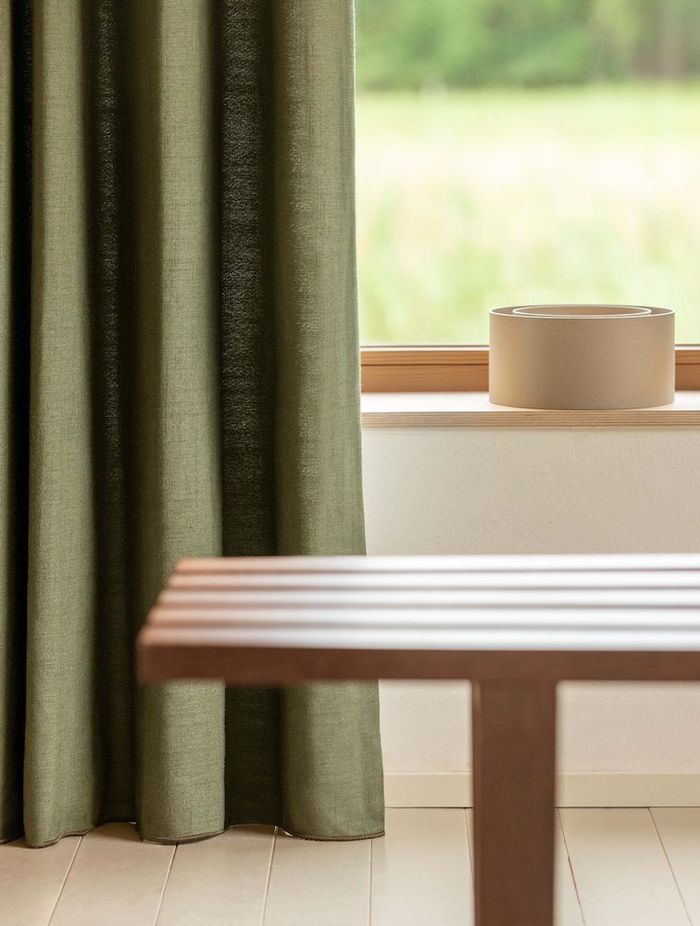
9. Velvet curtains
Velvet curtains are known for their thick, plush fabric, giving them a luxurious and opulent feel. This dense material makes them effective at blocking out light and providing insulation, making them ideal for bedrooms or other spaces where darkness and warmth are desired. The soft sheen of velvet can add depth and richness to a room's decor, making them a favoured choice for more sumptuous, elegant interiors. However, due to their weight and specific fabric, they can be more challenging to maintain, requiring gentle cleaning methods to preserve their texture and appearance.
10. Curtain panels
Curtain panels are among the most common and versatile window treatments. Typically made of a lightweight fabric, each curtain panel faces straight down, making them an ideal choice for floor-to-ceiling windows. Each side of the window will have its own panel, and they can be drawn together in the centre or pulled apart for light and access. They provide a neat and streamlined appearance, suitable for both casual and formal settings. The simplicity of curtain panels allows for a vast range of fabric choices, from sheer to blackout, letting homeowners decide the level of privacy and light control. The straightforward design also means they're relatively easy to hang, clean, and replace as decor tastes change.
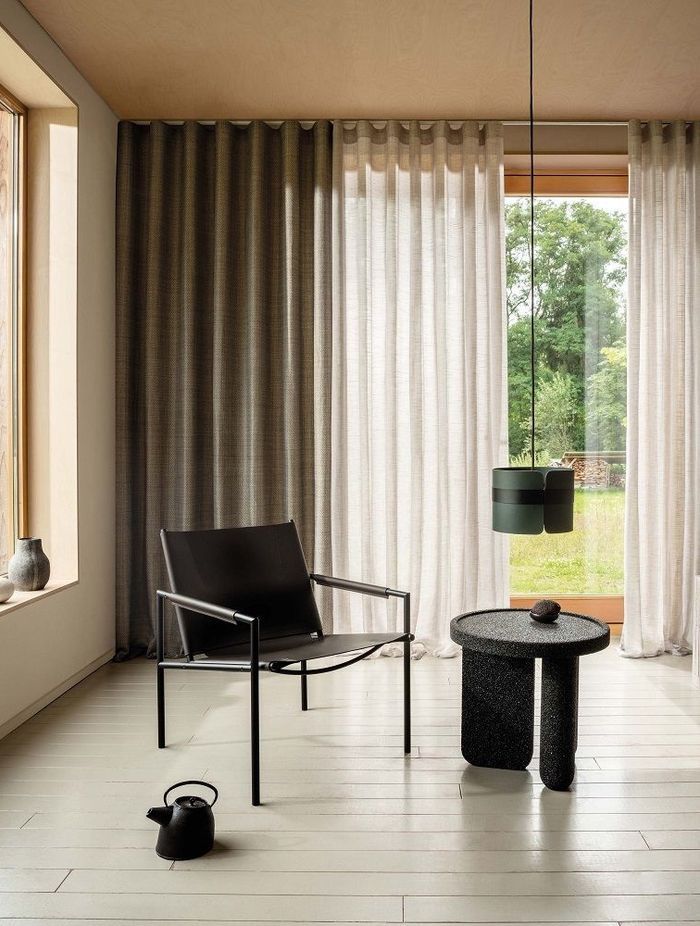
11. Tiered curtains
As the name suggests, tiered curtains boast a distinctive multi-layered design, often consisting of two or more horizontal sections that stack one above the other. This tiered approach is not only visually interesting but also incredibly functional. It offers the user the flexibility to control the amount of light and privacy to their preference; for instance, one can keep the lower tier drawn for privacy while the upper tier is pulled back to invite sunlight. Originating from a need to dress larger windows or those requiring varying degrees of light filtration, tiered curtains have expanded their presence, gracing many interior styles, be it traditional farmhouses or modern city apartments. They are available in various fabrics, textures, and patterns, catering to various aesthetic preferences.
12. Pinch pleat curtains
Pinch-pleated curtains are characterised by their series of pinched gatherings of fabric at the top, creating a pattern of uniform pleats across their width. Originating from traditional settings, they've seamlessly transitioned into modern interiors thanks to their adaptability. At their core, these curtains are designed by bunching fabric and sewing it to achieve the pleats, which grant a refined, finished appearance that's ideal for spaces like living rooms, bedrooms, and formal dining areas. The versatility of pinch pleats allows homeowners to experiment with various fabrics and colours, from sheer to heavy drapery. While they offer the benefit of a uniform, organised look and fit a range of window sizes, they often require more fabric, potentially raising their cost.
Related article: How to create beautifully gathered curtains
13. Thermal curtains
Thermal curtains, in terms of curtain style, strike a balance between form and function. The curtain fabric contains a distinct lining that helps maintain room temperature, acting as a shield against external elements. This makes them especially useful in areas with extreme temperature variations, potentially cutting down on heating or cooling expenses.
Modern designs ensure that while they are practical, they also align with aesthetic preferences, offering homeowners a wide range of choices. However, the special lining makes them a bit heavier, and they might not fall as gracefully as other curtain types. They can also potentially limit natural light, a point to consider for those who prefer brighter rooms.
14. Net curtains
Net curtains are a type of lightweight, sheer fabric used predominantly for privacy during daylight hours. Made with an open weave, they allow plenty of natural light into a room while obscuring direct visibility from the outside. This makes them particularly popular for ground-floor windows, especially in urban or densely populated areas. Net curtains are also versatile in terms of decor, easily fitting into both modern and traditional interiors. They can be used alone for a minimalist look or paired with heavier drapes for added depth and texture. Being lightweight, they're straightforward to hang and clean.
15. Lace curtains
Made of open-weave fabric, lace curtains offer a level of privacy while still allowing light to pass through. They're beneficial in rooms where you want to shield the interior from direct outside view but don't want complete darkness. Their intricate patterns can add a decorative touch, and while they might look delicate, they can be quite durable. Being lightweight, they're easy to install and maintain. They're often used in living areas and bedrooms, especially in homes aiming for a classic or vintage aesthetic.

16. Scarf curtains
Scarf curtains are long, thin pieces of fabric draped over a rod. They aren't designed to open or close like traditional curtains, but rather to add an aesthetic touch to window treatments. Typically made from lightweight materials, they can soften the appearance of heavier, functional curtains or blinds behind them. They're versatile: you can drape them in a simple U-shape, wrap them around the rod for a twisted effect, or even let them hang straight down on either side of the window. Given their decorative nature, they don't offer much in terms of privacy or light control on their own.
17. Cafe curtains
Cafe curtains are specifically tailored to cover just the bottom half of a window, typically extending to the window sill. This design, inspired by European cafes, serves a dual purpose: it allows plenty of natural light from the top while maintaining privacy at the lower section of the window. This makes them especially suitable for rooms that are street-level or where privacy is essential without sacrificing daylight.
Whether you're aiming for a homely, rustic feel or a sleek, contemporary look, these curtains can be chosen to complement the room's aesthetic. Bby selecting an ornate or uniquely styled curtain rod, the overall appearance of the cafe curtains can be enhanced, potentially becoming a standout feature of the room.
Related article: Great tips on how to choose curtains for your living room
Choose from these amazing types of curtains
As you can see, there are some fantastic types of curtains in the market that can freshen any room in your house. Whether it's the popular eyelet curtains or the more functional blackout curtains, you'll find a style that's not only pleasing to the eye but performs the way you need it to.
This article was updated on 16th December 2024
Browse high-quality curtains from top Australian suppliers on ArchiPro

